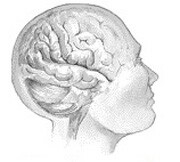- Skip Storing This Everyday Product in the Fridge Door
- Green Tea + B3 Pairing May Boost Brain Health
- Navigating Your Midlife Crisis: Embracing New Possibilities
- City Raccoons Showing Signs of Domestication
- Mapping the Exposome: Science Broadens Focus to Environmental Disease Triggers
- One Week Less on Social Media Linked to Better Mental Health
- Your Brain Changes in Stages as You Age, Study Finds
- Some Suicide Victims Show No Typical Warning Signs, Study Finds
- ByHeart Formula Faces Lawsuits After Babies Sickened With Botulism
- Switch to Vegan Diet Could Cut Your Greenhouse Gas Emissions in Half
Researchers Closer to Test for Human Form of ‘Mad Cow’ Disease


Scientists have developed two simple tests that could offer the first non-invasive ways to diagnose the human version of “mad cow” disease.
The tests — one using a urine sample, the other nasal “brushings” — seem to reliably detect Creutzfeldt-Jakob disease (CJD), according to separate reports in the Aug. 7 issue of the New England Journal of Medicine.
CJD — popularly known as mad cow disease — is an invariably fatal brain disease, so earlier diagnosis will not save patients’ lives — at least not until therapies for the disease can be developed.
But experts said simple tests for CJD could help prevent transmission of the disease, which, very rarely, has happened through medical procedures, blood donation or contaminated beef.
“We also need rapid, sensitive and specific tests to help us make the correct diagnosis for people presenting with dementia,” said Dr. Colin Masters, a prion disease researcher at the University of Melbourne, in Australia.
“It is sometimes very difficult to be sure of the correct diagnosis using just (signs and symptoms),” said Masters, who wrote an editorial published with the studies.
CJD arises when normally benign proteins called prions become “misfolded,” killing off brain cells. There are several forms of CJD: The most common one is “sporadic” CJD, which affects about one in a million people worldwide each year.
Another form is variant CJD, which is the form linked to eating beef tainted with “mad cow” disease. Mad cow — or bovine spongiform encephalopathy — is a prion disease that strikes cattle. There have been 229 confirmed cases of variant CJD globally, mostly in the United Kingdom and France, according to the U.S. Centers for Disease Control and Prevention (CDC).
Right now, the only way to definitively diagnose any type of CJD is by looking at brain tissue — either from a biopsy or an autopsy.
But in one of the new studies, researchers tested a new technology for detecting abnormal prion protein in the nasal tissue of people known to have either sporadic CJD or an even rarer inherited form.
The investigators found that the test was accurate in 30 of 31 people with CJD. Just as important, the test gave a negative result for all 43 people in a comparison group — who were either healthy or had Alzheimer’s or Parkinson’s disease.
The other study focused on variant CJD. That test detected prion protein in 13 of 14 urine samples from people who’d died of the disease. In contrast, it found no prion protein in urine from 224 people who were healthy or had other neurologic diseases, including sporadic CJD.
It’s not surprising that the test picked up prion protein only in people with variant CJD, said the senior study author Claudio Soto, a professor of neurology at the University of Texas Health Science Center at Houston.
“Variant CJD and sporadic CJD are different diseases,” Soto said. In the sporadic form, the abnormal prion arises in the brain. With variant CJD, the prion reaches the gut first, and eventually gets to the brain.
So, Soto said, it makes sense that people with variant CJD would have minute amounts of abnormal prion in their urine. It’s just that until recently, the technology did not exist to detect it.
“Personally, I didn’t think it would be possible, until three years ago when we were able to detect it in the urine of [lab] animals,” Soto said.
One question now is, can this test pick up the prion in blood? Soto said his team couldn’t study that, because of restrictions on blood samples from people who’ve died of variant CJD.
But if it does detect the prion in blood, Soto said, the test could potentially be used to screen donor blood in the United Kingdom and possibly other countries.
Masters agreed. “We need these tests to help us with infection control measures, particularly for the safety of the blood transfusion process in people incubating variant CJD,” he said.
In those “incubating” cases, people carry the abnormal prion but have not developed variant CJD symptoms. In the United Kingdom, a few cases of the disease have been linked to blood transfusions from donors who carried the prion but were not yet symptomatic.
And last year, a study estimated that roughly 30,000 U.K. residents could be carriers.
So far, Soto noted, the people stricken by variant CJD have been young — typically in their 20s, whereas sporadic CJD affects older adults. But, he added, it’s still possible that people incubating the variant prion could develop the disease later in life.
“We don’t know how long the incubation period might last,” Soto said. “Maybe those people won’t develop CJD, but we don’t know.”
In the United States, there have been four cases of variant CJD, according to the CDC. The agency says there is evidence all of those people were infected outside the United States.
Similarly, four cases of mad cow disease have been found in U.S. cattle, according to the CDC. By comparison, at the height of the mad cow epidemic in the United Kingdom, in 1993, there were 1,000 new cases in cattle each week.
The authors of both studies say further studies are necessary to confirm their findings before either method could be available for detecting CJD.
More information
The U.S. Centers for Disease Control and Prevention has more on Creutzfeldt-Jakob disease.
Source: HealthDay
Copyright © 2025 HealthDay. All rights reserved.










